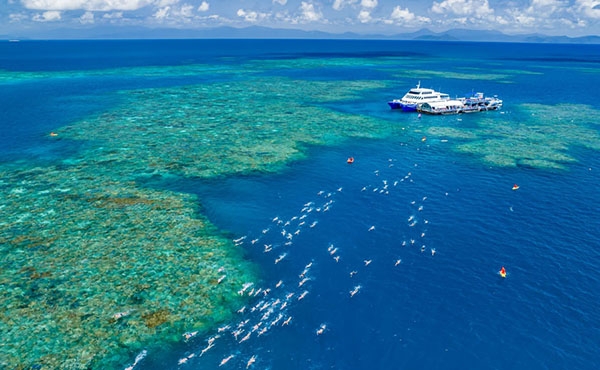Ports form an integral part of the supply chain supporting industries, trade, defence and local communities.1422 Ports enable the export of agricultural and mineral commodities, enable the import of goods (such as fuel, cars and household items that support regional communities) and support commercial tourism by provision of deep channels and berths. Ports provide a vital link between Queensland, the rest of Australia and the world, and have significant economic and social value. Maritime port infrastructure, including shipping lanes, channels and berths, is critical to the ongoing operation of many trade industries. In the same way that roads and rail must be maintained, maritime port infrastructure must be maintained for the efficient flow of trade.1423
Ports provide critical support services and contribute significantly to the economy
Management of the COVID-19 pandemic affected trade through the Region’s ports. The combined trade throughput at the priority ports in the Region varied in the period between 2016–17 and 2021–22 financial years, seeing an overall loss during the COVID-19 management period. The average annual trade throughput from all priority ports was about 268 million tonnes.1424 In the same period, the Port of Townsville saw the highest growth of about 12 per cent, peaking just before the COVID-19 pandemic. The Port of Gladstone was the highest performer continuing at a steady 120 million tonnes annual throughput during this period. Hay Point saw a steady decline from a peak of 120 million tonnes in 2017–18 to 97 million tonnes in 2021–22. Among the minor ports, Cape Flattery was the highest performer during this period, with an average 2.7 million tonnes annual throughput.1424 For the coal terminals, Hay Point had a steady decline of about 12 per cent in coal throughput since 2017–18. The Dalrymple Bay terminal, which is part of the Abbot Point priority port, had an approximate 18 per cent decline in coal throughput in the same period.1425 The Port of Mackay continues to be a key commodity hub for petroleum, raw and refined sugar.1425 Comprehensive data on direct and indirect employment across all ports in the Region are lacking.
The scale of capital works is a further indicator of the economic stimulus generated by ports.1426 Across the major trading ports since 2019, such works include:
- Townsville — The $1.6 billion port expansion project commenced in 2019. It is predicted to provide 354 additional jobs and includes capital dredging, a new outer harbour, wharves and associated infrastructure. Stage one of the project is a $251 million Channel Upgrade project to deliver a wider shipping channel and 62-hectare (0.62 square kilometre) port reclamation area. The wider shipping channel will allow vessels up to 300 metres in length to safely access the port instead of bypassing Townsville.1427
- Cairns — The $127 million shipping development project was completed in 2020. The project included the widening and deepening of the existing Trinity Inlet shipping channel. Cruise ships up to 300 metres can now be accommodated at the Port of Cairns. One of the first ships to berth in the new Cairns development was the Queen Elizabeth cruise ship (294 metres) in February 2020.
The Region’s ports continue to conduct long-term environmental monitoring programs and be innovative in data capture approaches and ways to minimise harm (Section 5.7.3). These local port data are integrated into regional report cards. However, the availability of the data to integrate into Reef management more broadly is limited. Port authorities also undertake a range of ambient and project‑specific monitoring, sediment sampling analysis as well as engage with and contribute to local communities, including with Traditional Owners. The existing port network provides opportunity to capitalise on emerging industries, for example, green hydrogen export.1428 Dredge material is also a reusable resource; however, its beneficial reuse within ports is often associated with increased
costs and emissions.1429


